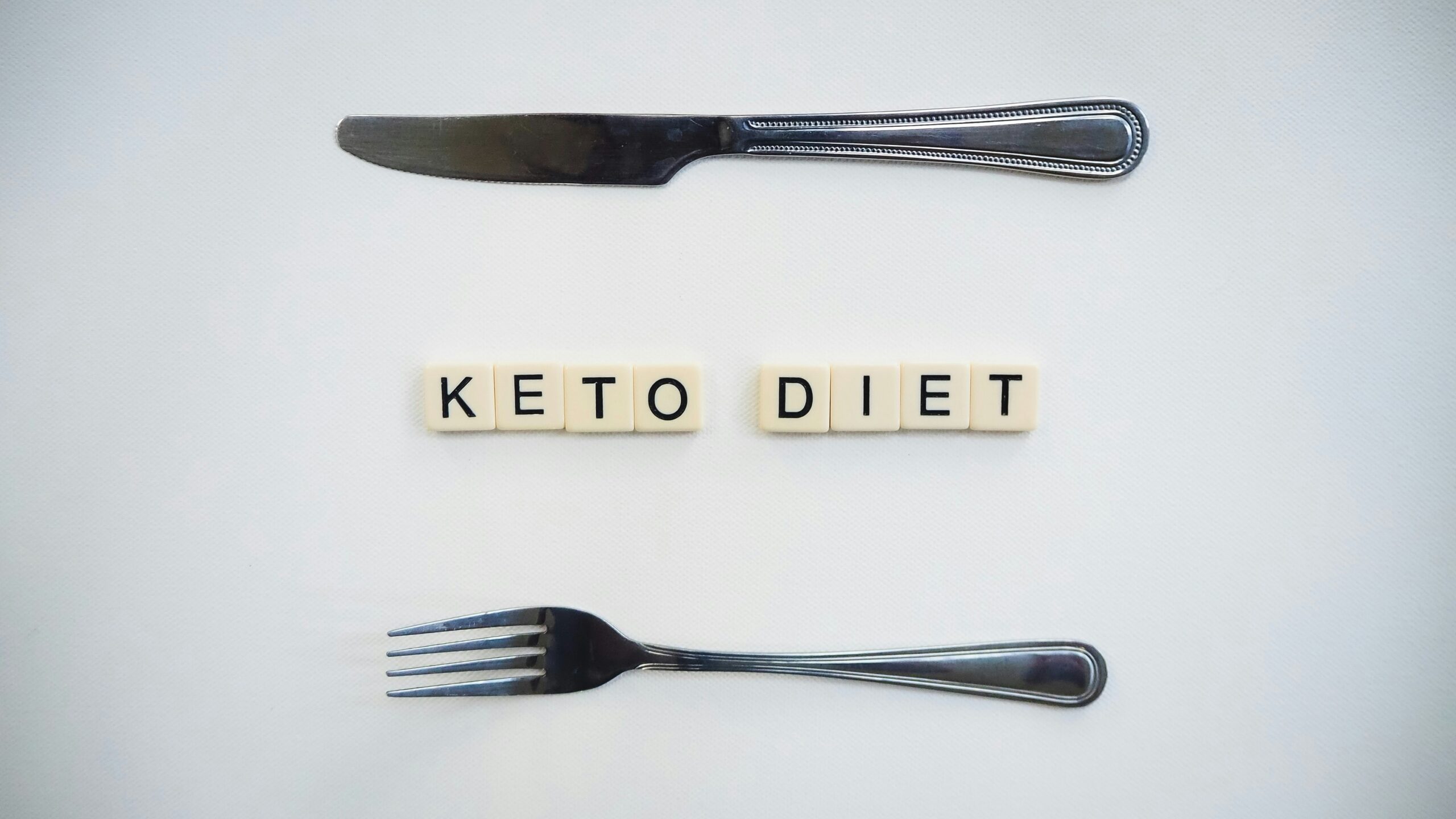So you’ve decided to embark on the Keto journey, and you’re curious about what lies ahead in those crucial first three days. Well, get ready for some exciting changes! During these initial stages of the Keto diet, your body begins to transition from using glucose as its main source of energy to burning fats for fuel. This metabolic shift can bring about a range of experiences, from increased mental clarity to reduced appetite, and even the infamous “Keto flu.” So buckle up and let’s explore the incredible transformations awaiting you on the first 3 days of Keto!

Understanding Keto Diet
The science behind ketogenic diet
The ketogenic diet, often referred to as the keto diet, is a low-carb, high-fat diet that has gained popularity in recent years. When you consume very few carbohydrates and increase your intake of healthy fats, your body enters a state of ketosis. During ketosis, your body switches from using glucose as its primary source of energy to using ketones, which are produced from the breakdown of fats. This metabolic shift can have various effects on your body and overall health.
Physical changes your body goes through
When you start the keto diet, your body undergoes several physical changes. Firstly, there may be an initial decrease in energy as your body adjusts to utilizing fats for fuel instead of carbohydrates. This is because carbohydrates are typically a quick source of energy, whereas fats take longer to metabolize. Additionally, you may experience carbohydrate withdrawal symptoms, which can include cravings, mood swings, and irritability. As your body adapts to the absence of carbohydrates, you may also experience increased water expulsion, leading to frequent urination and potential electrolyte imbalances. Lastly, you may notice changes in your appetite, as the high-fat content of the keto diet can help regulate hunger hormones.
How the diet shifts your body’s nutritional needs
The ketogenic diet shifts your body’s nutritional needs by drastically reducing carbohydrate intake and increasing fat consumption. Typically, a standard diet consists of a higher ratio of carbohydrates, which are broken down into glucose. Glucose is then used by the body as its primary source of energy. However, on the keto diet, your carbohydrate intake is restricted, which forces your body to use an alternative fuel source – fats. This shift in nutrient intake requires careful attention to ensure you consume enough healthy fats to support ketosis and maintain overall nutritional balance.
Day One of Keto
Initial decrease in energy
During the first day of starting the keto diet, you may experience a temporary decrease in energy levels. This is because your body is adjusting to the significant reduction in carbohydrates, which are its preferred energy source. Without an abundant supply of carbohydrates, your body needs to adapt to utilizing fats for energy instead. Initially, this transition period can result in a feeling of fatigue or decreased energy levels.
Beginning of carbohydrate withdrawal
As your body starts to adapt to the absence of carbohydrates, you might begin to experience carbohydrate withdrawal symptoms. These symptoms can vary from person to person but commonly include cravings, irritability, and mood swings. It’s important to remember that these symptoms are temporary and usually subside after the initial phase of the diet.
Increased water expulsion
One noticeable effect of starting the keto diet is increased water expulsion. This is due to the reduction in carbohydrates, which are known to retain water in the body. As your carbohydrate intake decreases, your body excretes stored glycogen, which holds water. This can lead to more frequent urination and potentially cause electrolyte imbalances. It’s crucial to stay well-hydrated and consider supplementing with electrolytes to support your body’s needs during this adjustment period.
Changes in appetite
Another change you might experience on the first day of the keto diet is a shift in your appetite. Low-carb, high-fat foods tend to be more satiating, meaning they keep you fuller for longer periods of time. This can result in a decrease in hunger and potential changes in your eating patterns. It’s important to listen to your body and eat when you’re hungry, but also be mindful of consuming adequate nutrients to support your overall health and wellbeing.
Day Two of Keto
Continued energy fluctuations
On the second day of the keto diet, you may continue to experience fluctuations in energy levels. As your body adapts to using fats for fuel, there may still be periods of low energy. However, it’s essential to remember that this is a normal part of the adjustment process. Your body is learning to efficiently burn fat for energy, and these fluctuations should gradually stabilize over time.
Heightened effects of carbohydrate withdrawal
As your body enters its second day without carbohydrates, the effects of carbohydrate withdrawal may become more pronounced. Cravings, irritability, and mood swings may persist, but it’s essential to stay committed and remind yourself of the long-term benefits of the keto diet. These symptoms should gradually subside as your body adapts to using ketones as its primary source of energy.
Possible signs of ketosis
By the second day of the keto diet, you may start experiencing possible signs of ketosis. These signs can include an acetone-like breath odor, which is a result of ketone production in the body. Additionally, some individuals may notice a decrease in appetite and an increase in mental clarity, which are positive indications that your body is entering a state of ketosis.
Changes in mental clarity
One of the benefits often reported by keto dieters is an improvement in mental clarity. In the initial stages of ketosis, you may start to notice enhanced focus, concentration, and mental sharpness. This is thought to be due to the steady supply of ketones to the brain, which can provide a more stable source of energy compared to glucose. Enjoy the mental boost and embrace the positive cognitive changes that come with the keto diet.
Day Three of Keto
Increase in energy levels
On the third day of the keto diet, you may begin to experience an increase in energy levels. As your body becomes more adapted to using fats for fuel, you should start feeling a surge in stamina and overall energy. This can be particularly beneficial for individuals who engage in physical activities or exercise regularly, as the keto diet can optimize fat utilization for energy during workouts.
Reduced hunger and cravings
By the third day of the keto diet, you might notice a reduction in hunger and cravings. The high-fat content of the diet helps promote satiety, keeping you feeling fuller for longer periods of time. This can be advantageous for individuals who struggle with overeating or snacking throughout the day. However, it’s still essential to listen to your body’s cues and provide it with the nutrients it needs to thrive.
Clear signs of being in ketosis
At this stage, you may start experiencing clear signs that your body is in ketosis. These signs can include consistent ketone production, which can be measured using ketone testing strips or devices. Additionally, some people report a metallic taste in their mouth, indicating the presence of ketones. These signs are positive indications that your body has successfully transitioned into burning fat for energy.
Improvements in digestion
Another positive effect of the keto diet is often seen in improvements in digestion. As your carbohydrate intake decreases, your body becomes less reliant on fiber for digestion, leading to changes in bowel movement patterns. Some individuals experience a decrease in bloating, gas, and overall digestive discomfort. However, it’s essential to monitor your fiber intake and ensure you are meeting your body’s dietary requirements.

Recognizing Keto Flu
Common symptoms of keto flu
One potential hurdle during the first few days of the keto diet is the occurrence of “keto flu.” Keto flu refers to a set of symptoms that some individuals experience during the initial transition into ketosis. These symptoms can include fatigue, nausea, dizziness, headache, irritability, and muscle cramps. While not everyone experiences keto flu, it can be a temporary setback for some. It’s important to remember that these symptoms usually subside as your body adapts to the keto diet.
How long keto flu usually lasts
The duration of keto flu can vary from person to person. Some individuals may only experience mild symptoms that last a few days, while others may experience more severe symptoms that persist for a week or longer. It’s crucial to stay patient and give your body time to adapt. Remember that this is a temporary phase, and once you overcome it, you will likely start experiencing the various benefits of the keto diet.
Ways to alleviate keto flu symptoms
Fortunately, there are steps you can take to alleviate keto flu symptoms. Increasing your water intake can help prevent dehydration and relieve symptoms such as fatigue and muscle cramps. It is also important to ensure you are consuming enough electrolytes, as the keto diet can cause an electrolyte imbalance. Additional strategies to alleviate keto flu symptoms include eating nutrient-dense foods, getting adequate rest, and gradually easing into the keto diet by gradually reducing carbohydrate intake rather than abruptly cutting it out.
Changes in Physical Appearance
Initial weight loss due to water expulsion
When you first start the keto diet, you may experience initial weight loss. This weight loss is primarily due to the expulsion of water from your body. Carbohydrates are known to retain water, so when you reduce your carbohydrate intake, your body starts to release stored glycogen, which holds water. This rapid reduction in water retention can result in a noticeable drop in weight on the scale, providing a sense of early success and motivation.
Changes in body fat percentage
As you continue following the keto diet beyond the initial days, you may start to experience changes in your body fat percentage. The ketogenic diet promotes the utilization of stored body fat for energy, which can lead to a gradual decrease in overall body fat. It’s important to note that this process takes time and consistency. Monitoring your body fat percentage, rather than solely relying on the scale, can provide a more accurate assessment of your progress.
Fluctuation in muscle mass
During the first few days of the keto diet, you may experience some fluctuation in muscle mass. This is mainly due to changes in water balance and glycogen depletion. As your body transitions into ketosis, glycogen stores are depleted, causing a decrease in muscle fullness and potential temporary loss of muscle mass. However, with proper nutrition and exercise, it is possible to maintain and even build muscle while on the keto diet.

Psychological Changes and Mood Swings
Possible initial irritability or moodiness
Starting a new diet, such as the keto diet, can sometimes bring about psychological changes and mood swings. It’s not uncommon to experience irritability or moodiness during the initial phase of adapting to the diet. This can be attributed to various factors, including withdrawal from certain foods, changes in blood sugar levels, or simply the adjustment process. Remember that these mood swings are temporary and often resolve as your body adapts to the new way of eating.
Increased clarity and sharpness
One notable positive side effect of the keto diet is an increase in mental clarity and sharpness. Many individuals report enhanced focus, improved cognitive function, and increased mental alertness while following the diet. This may be attributed to the stable energy supply provided by ketones, which are efficiently used by the brain. Embrace this newfound mental clarity and utilize it to your advantage in various areas of your life.
Improvements in overall mood after the initial phase
After the initial phase of adjustment, many individuals experience improvements in overall mood while on the keto diet. This can be attributed to various factors, such as stabilized blood sugar levels, increased consumption of nutrient-dense foods, and the overall positive impact of a healthy lifestyle. As your body adapts to ketosis and becomes more efficient at utilizing fats for fuel, you may find yourself experiencing a sense of well-being and improved emotional balance.
What to Eat During the First 3 Days
Optimal food choices for starting the ketogenic diet
When starting the keto diet, it’s important to make optimal food choices to support your body’s transition into ketosis. Focus on consuming foods that are low in carbohydrates and high in healthy fats. Include sources of high-quality protein, such as lean meats, poultry, fish, and eggs. Incorporate non-starchy vegetables like leafy greens, cauliflower, and broccoli. In terms of fats, opt for sources like avocados, nuts, seeds, and healthy oils like olive oil and coconut oil. Avoid foods high in carbohydrates, such as grains, sugars, and starchy vegetables.
How to manage cravings and hunger
Managing cravings and hunger can be a challenge during the first few days of the keto diet. To minimize cravings, ensure you are consuming enough healthy fats, as they help promote satiety and reduce hunger. Keep healthy snacks readily available, such as nuts, seeds, or small portions of keto-friendly foods, to help curb cravings. Drinking plenty of water can also help manage hunger, as thirst is sometimes mistaken for hunger. Additionally, listening to your body’s hunger cues and eating when hungry, but stopping when satisfied, can help maintain a healthy relationship with food.
Hydration needs during the initial keto phase
Hydration is crucial during the initial phase of the keto diet, as the diet can cause increased water expulsion through urine. Aim to drink at least 8 cups (64 ounces) of water per day, or more if you are physically active or live in a hot climate. Additionally, consider supplementing with electrolytes, as the reduction in carbohydrates can lead to electrolyte imbalances. Electrolytes, such as sodium, potassium, and magnesium, are vital for maintaining proper hydration and supporting various bodily functions.
Micronutrient needs
While the focus of the keto diet is on macronutrients (fat, protein, and carbohydrates), it’s important not to neglect your micronutrient needs. Ensure you are consuming a variety of nutrient-dense foods to meet your body’s requirements for vitamins, minerals, and antioxidants. Include non-starchy vegetables, which are rich in vitamins and minerals. Consider incorporating low-carbohydrate fruits like berries, which are packed with antioxidants. You may also benefit from including sources of fermented foods, such as sauerkraut or yogurt, to support gut health.
Watching for Signs of Progress
Physical signs of entering ketosis
Watching for physical signs of entering ketosis can be an exciting part of the keto journey. Some common physical signs include weight loss, decreased bloating, increased energy levels, and improved mental clarity. You may also notice changes in your body composition, such as a reduction in body fat or inches. Pay attention to these positive changes as indicators that your body has successfully transitioned into ketosis.
Tools for measuring ketone levels
Several tools can help measure ketone levels in your body. The most common method is using urine test strips, which measure the presence of ketones in your urine. However, it’s important to note that urine ketone levels may not always accurately reflect the level of ketosis in your body. Blood ketone meters provide a more accurate measurement of ketones by testing a small sample of blood. Breath ketone meters are another option, measuring ketones in your breath. Choose the method that best suits your preferences and needs.
How to identify if the diet is working
Identifying if the keto diet is working for you can be determined by several factors. Firstly, pay attention to changes in your body composition, such as weight loss and reduced body fat percentage. Additionally, monitor improvements in your energy levels, mental clarity, and overall well-being. Keep track of any positive changes in your health, such as improved cholesterol levels or stabilized blood sugar levels. Finally, consult with a healthcare professional to assess any specific health markers or concerns you may have.
Next Steps After First Three Days
The importance of persistence in the keto diet
After the first three days of the keto diet, it’s important to emphasize the significance of persistence. The keto diet is a lifestyle change rather than a short-term fix, and consistency is key to achieve long-term results. Make a commitment to stick with the diet and allow your body to adapt fully to the metabolic changes. Maintain a positive mindset and focus on the numerous benefits that the keto diet can offer for your health and well-being.
Expected changes in the following weeks
Beyond the first three days, you can expect to see more significant changes in your body and overall health in the following weeks. With consistent adherence to the keto diet, you may experience continued weight loss, improvements in body composition, increased energy levels, and enhanced mental clarity. Benefits like improved blood sugar control, better cholesterol profiles, and reduced inflammation are also commonly reported. Each individual’s journey may vary, but staying committed and giving your body time to adapt is vital.
Ways to continue supporting your health and wellness on the diet
To continue supporting your health and wellness on the keto diet, there are several strategies you can incorporate. Firstly, ensure you are consuming a variety of nutrient-dense foods to meet your body’s nutritional needs. Consider incorporating intermittent fasting, which can enhance the benefits of the keto diet and promote fat burning. Regular exercise, focusing on both cardiovascular and strength training, can also help optimize your results and support overall health. Lastly, maintain open communication with a healthcare professional to monitor any specific health concerns and ensure you are on the right track.

